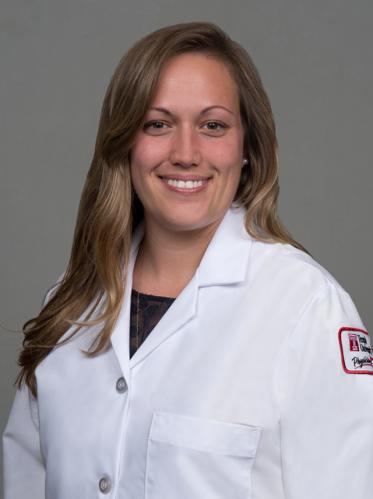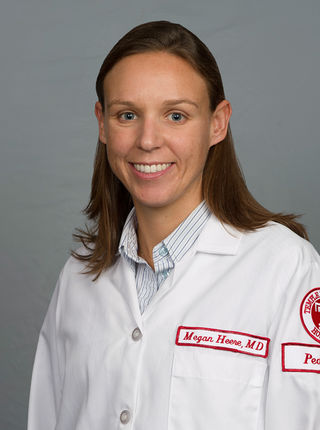Menü megjelenítése
Nincs eredmény.
Webtartalom-megjelenítő
About
Located in north Philadelphia, the department provides clinical care to the children of our underserved and disadvantaged community. The research activities of the department have direct application to improving the health and quality of life of these children, are clinically based and fall into 3 areas: The impact of social determinants on child health, infant sleep hygiene, and medical decision making.
Social Determinants of Health and Chronic Childhood Illness
Adverse childhood events(ACEs), such as family or community violence, food insecurity or housing insecurity have been shown to have a significant impact on the physical health of adults. Resilience, as manifest by support systems, mitigates, to some degree, the physical impact of ACEs in adults. Led by Ashleigh Hall, DO, Associate Professor of Clinical Pediatrics at LKSOM, studies from our department have demonstrated a similar effect in adolescents. Current research has identified an impact of ACEs and resilience on the behavior of children aged 6 - 11 years (manuscript in preparation).

-
Bibliography
- Hall A, Perez A, West X, Brown M, Kim E, Salih Z, Aronoff S. The Association of Adverse Childhood Experiences and Resilience With Health Outcomes in Adolescents: An Observational Study. Glob Pediatr Health. 2021 Feb 5;8:2333794X20982433. doi: 10.1177/2333794X20982433. PMID: 336 = 14836; PMCID: PMC7868450.
- Jones NL, Burger J, Hall A, Reeves K. The Intersection of Urban and Global Health Pediatr Clin N Am 66 (2019) 561–573
Sleep Hygiene in Infants
Positioning of infants in sleep, where infants sleep, and how they sleep are important health issues. While it is well known that prone positioning of newborns and young infants increases the risk of sudden unexplained death, cosleeping with parents is also a risk factor. A study by Megan Heere, M.D., Professor of Clinical Pediatrics at LKSOM, noted that infants without an identifiable place to sleep were at increaed risk for cosleeping. As a follow on study, sleep hygiene education coupled with the gifting of a cardboard bassinet at the time of discharge reduced the rates of co sleeping in our patient population. Ongoing NIH funded studies, in collaboration with investigators from St. Joesph's University and Children's Hospital of Philadelphia, are examining the relationship between eating and activity and sleep duration in children.

-
Bibliography
- Heere M, Moughan B, Alfonsi J, Rodriguez J, Aronoff S. Factors Associated With Infant Bed-Sharing. Glob Pediatr Health. 2017 Feb 2;4:2333794X17690313. doi: 10.1177/2333794X17690313. PMID: 28229101; PMCID: PMC5308437.
- Heere M, Moughan B, Alfonsi J, Rodriguez J, Aronoff S. Effect of Education and Cardboard Bassinet Distribution on Newborn Bed-Sharing. Glob Pediatr Health. 2019 Feb 25;6:2333794X19829173. doi: 10.1177/2333794X19829173. PMID: 30828590; PMCID: PMC6390216.
Medical Decision Making
In its simplest form, clinical decisions require the establishment of a diagnosis, implementation of effective therapy and prognosis of outcome. The typical way physicians are taught to make diagnoses or develop differential diagnoses is through pattern recognition. While this approach works well most of the time and is quick, it is subject to bias. Availability (over estimation of the likelihood of the first diagnosis that comes to mind), representativeness (sterotyping symptoms into a diagnosis without supporting evidence), anchoring (overestimation of the probability of the initial diagnostic impression to the point where strong non supportive information is ignored or minimized) and adjustment (overestimation of the strength of the non-supportive data to the point where the initial diagnostic impression is dismissed) biases lead to misdiagnosis and incorrect treatment (Tversky, A. and Kahneman, D. (1974). Judgment Under Uncertainty: Heuristics and Biases. Science. 185(4157), 1124-1131.)
The probabilistic approach to differential diagnosis is evidence-based and circumvents the heuristic biases described by Kahneman and Tversky. Briefly, the clinical problem is defined and evidence from the literature is used to established the catalogue of possible etiologies along with the associated probability for each clinical entity. This "prior probability" along with subsequent diagnostic testing can be used in a bayesian system to establish the most likely diagnosis. A detailed discussion of this process is available at Aronoff SC and DelVecchio MT. Differential Diagnosis in Pediatrics: A Probabilistic Approach. Hosp Pediatr (2016) 6 (8): 504–505.
Evidence and Problem Based Differential Diagnosis of Pediatric Clinical Problems
Finding evidence in the literature to establish diagnostic prior probabilities is difficult. Sometimes, large single center or multicenter case series of children with the clinical problem of interest can be found. Michael Del Vecchio, M.D., Professor of Pediatrics at LKSOM, has focused on the use of systematic reviews and meta-analytical rate estimations to develop probability based differential diagnoses for common and uncommon pediatric clinical problems. By providing a research opportunity for 4th year LKSOM medical students who are the first authors on these studies, Dr. Del Vecchio has created a large body of work that is widely used in pediatrics.

-
Bibliography
- Gumer LB, Del Vecchio M, Aronoff S. Strokes in children: a systematic review. Pediatr Emerg Care. 2014 Sep;30(9):660-4. doi: 10.1097/PEC.0000000000000218. PMID: 25186513.
- Brower KS, Del Vecchio MT, Aronoff SC. The Etiologies of Non-CF Bronchiectasis in Childhood: A Systematic Review of 989 Subjects. BMC Pediatrics, 2014; 141:299 - 307.
- Gottesman LE, Del Vecchio MT, Aronoff SC. Etiologies of conjugated hyperbilirubinemia in infancy: a systematic review of 1692 subjects. BMC Pediatr 2015; 15:192 doi: 10.1186/s12887-015-0506-5.
- Clark M, Aronoff S, Del Vecchio M. Etiologies of asymptomatic microscopic hematuria in children – systematic review of 1092 subjects. Diagnosis 2015; 2: 211-216.
- Simon DR, Aronoff SC, Del Vecchio MT. Etiologies of hemoptysis in children: A systematic review of 171 patients. Pediatr Pulmonol 2017; 52: 255-259. doi: 10.1002/ppul.23497.
- Deosthali A, Donches K, Del Vecchio M, Aronoff S. Etiologies of Pediatric Cervical Lymphadenopathy: A Systematic Review of 2687 Subjects. Global Pediatric Health, 2019; 6:1-7. DOI: 10.1177/2333794X19865440
- Davitt M, Delvecchio MT, Aronoff SC. The Differential Diagnosis of Vertigo in Children: A Systematic Review of 2726 Cases. Pediatr Emerg Care. 2020 Aug;36(8):368-371. doi: 10.1097/PEC.0000000000001281. PMID: 29095392.
- Zavala R, Metais B, Del Vecchio M, Aronoff, S. Pediatric Syncope – A Systematic Review. Pediatric Emergency Care, 2020; 36: 442-445 doi: 10.1097/PEC.0000000000002149
- Berardia G, Tuckfield L, DelVecchio MT , Aronoff S. Differential Diagnosis of Acute Liver Failure in Children: A Systematic Review. Pediatric Gastroenterology, Hepatology & Nutrition, 2020; 23 (November), 501-510 .
Derivation and Validation of Machine Learning Predictive Pediatric Models
With the development of machine learning(artificial intelligence; statistical learning) and the availability of large clinical datasets, predictive modeling for clinical medicine has become a reality. Stephen Aronoff, MD,MBA, Waldo E. Nelson and Chairman of Pediatrics and Professor, Department of Medical Education and Data Science at LKSOM has focused on modeling the outcomes of pediatric victims of trauma. Working with the Department of Pediatric Surgery at St. Christopher's Hospital for Children and with Nathan Kupperman, Director of PECARN, machine learning models to predict the probability of clinically significant injuries in children with and were developed and validated. A model to predict the risk of deep vein thromboses in pediatric trauma victims has been completed and is currently under peer review. Links to the web applications of these models are below:

-
Bibliography
- Pennell C, Polet C, Arthur LG, Grewal H, Aronoff S. Risk assessment for intra-abdominal injury following blunt trauma in children: Derivation and validation of a machine learning model. J Trauma Acute Care Surg, 2020; 89:153-159
- Rowe C, Wiesendanger K,Polet C, Kuppermann N, Aronoff S. Derivation and Validation of a Simplified Clinical Prediction Rule for Identifying Children at Increased Risk for Clinically Important Traumatic Brain Injuries Following Minor Blunt Head Trauma. J Pediatr: X 2020;3:100026
-
Web Applications
